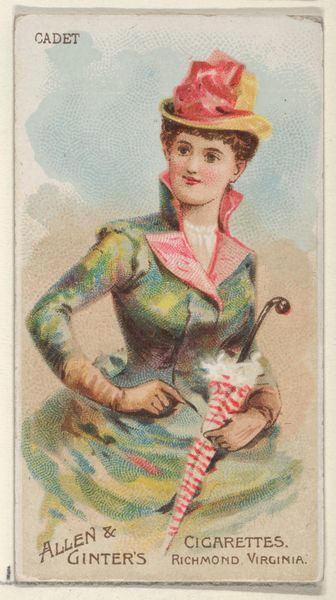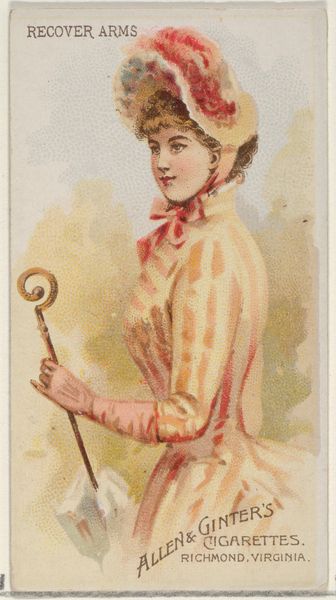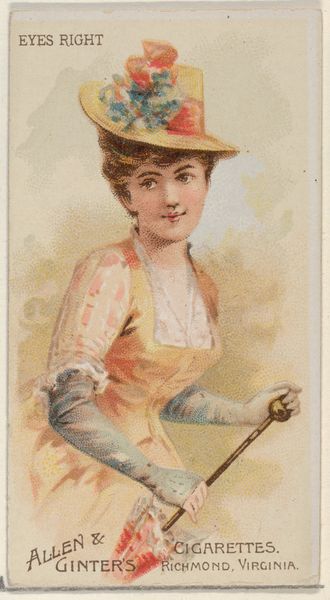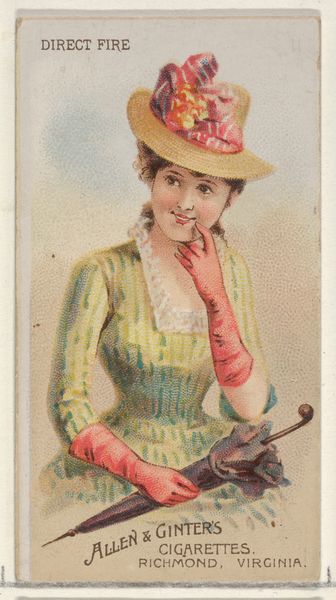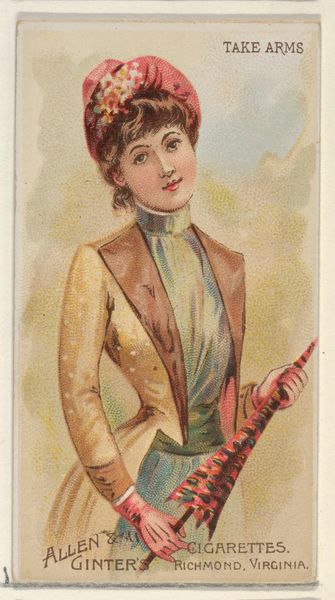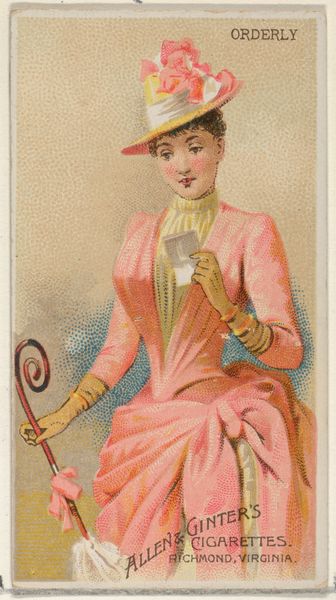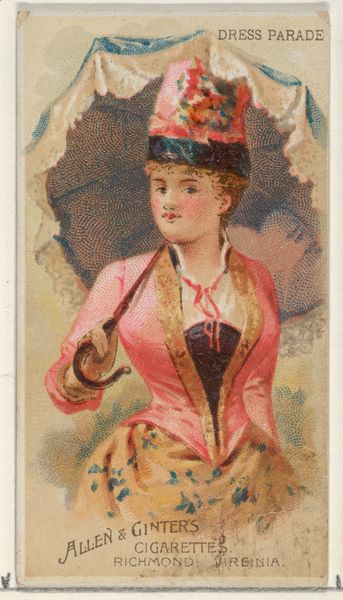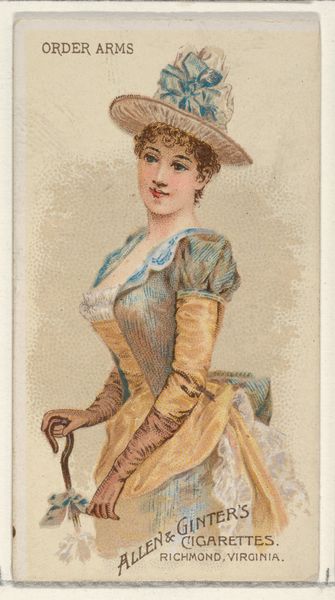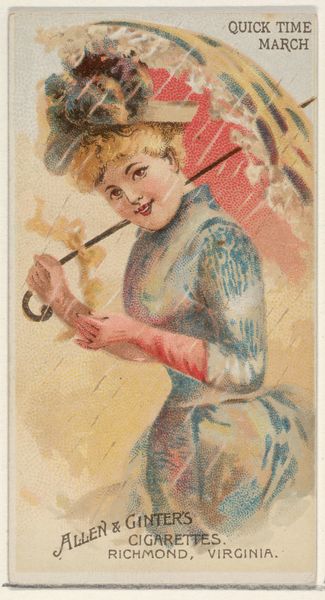
Right Face, from the Parasol Drills series (N18) for Allen & Ginter Cigarettes Brands 1888
0:00
0:00
drawing, print, photography
#
portrait
#
drawing
# print
#
impressionism
#
caricature
#
photography
Dimensions: Sheet: 2 3/4 x 1 1/2 in. (7 x 3.8 cm)
Copyright: Public Domain
Editor: So this is "Right Face, from the Parasol Drills series" made in 1888 for Allen & Ginter Cigarettes. It's currently at the Met. It looks like a color print; a woman in pink, holding a parasol. There's something a little humorous about the military-like title paired with such a delicate image. What do you make of this juxtaposition? Curator: It’s a fascinating piece of cultural ephemera. Think about it: the late 19th century, a burgeoning consumer culture, and the rise of mass-produced cigarettes. Allen & Ginter used these cards to promote their brand, embedding them within a broader cultural narrative. The "Parasol Drills" series itself, focusing on fashionable women with parasols, speaks volumes about the social role of women, their engagement with leisure, and even the evolving aesthetics of the era. But "Right Face," the militaristic command, is unexpected, isn't it? Editor: Definitely! It’s like two different worlds colliding. Was there some expectation that the image had to look important somehow? Curator: Possibly. The card presents a complex interplay of gender, consumerism, and perhaps even a subtle nod to the era's imperial ambitions. The military-esque title might aim to elevate the product—cigarettes—by associating it with discipline, order, and a certain perceived power, subtly reinforcing social hierarchies. Do you see this as reinforcing gender roles? Editor: Hmm, yes, I think so. On one hand, it shows this elegant woman but the name gives power to the image through masculine terms, perhaps marketing the cigarettes for women too? Curator: Precisely. Think of how cigarette companies used idealized imagery to broaden their market appeal, subtly influencing perceptions of femininity and sophistication. So, "Right Face" isn't merely a portrait but a strategic artifact embedded within a web of social and political considerations. Editor: That’s a great way to understand it. So it's more than just a pretty picture; it's a reflection of the societal pressures and marketing tactics of that time. Curator: Absolutely. Looking at it through a historical lens reveals much about the cultural landscape of the time, beyond its immediate aesthetic appeal.
Comments
No comments
Be the first to comment and join the conversation on the ultimate creative platform.
